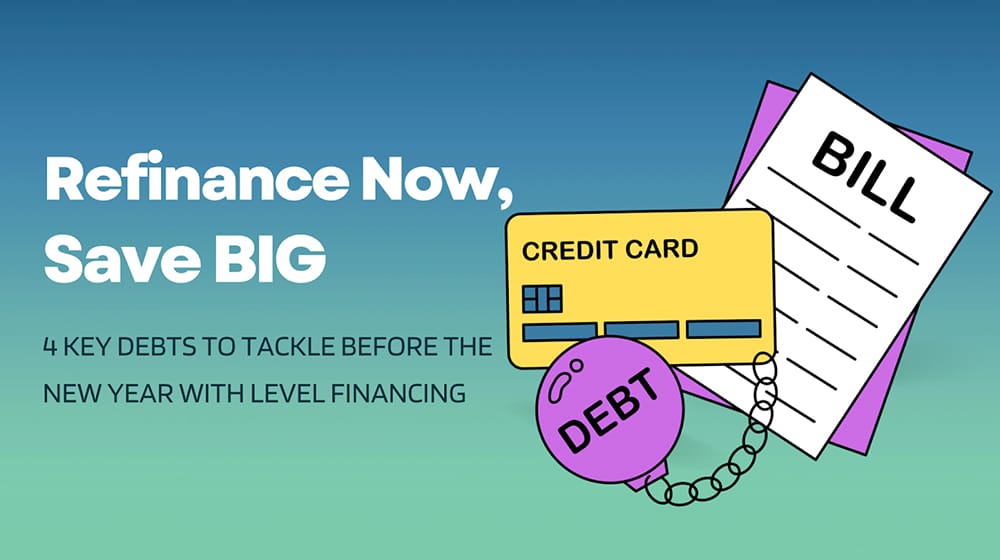Early retirement requires diligent planning, disciplined saving, and smart investment strategies.
This article will explore various aspects of achieving your retirement goals by the age of 50. Furthermore, we’ll provide guidance on budgeting techniques that can increase your savings rate and keep you on track toward early retirement. We will also address managing debt before retiring at 50 and planning for unexpected expenses in order to ensure a financially secure future.
Let’s dig into how much is needed to retire at 50
Determining Your Retirement Income Needs
In order to retire comfortably at age 50, it’s crucial to determine how much money you’ll need to cover your living expenses and achieve your financial goals. This involves analyzing your current spending habits, estimating future expenses like healthcare, and setting realistic retirement savings targets.
Analyzing Current Spending Habits
Start by carefully examining your monthly expenses. Track all of your expenditures for several months using budgeting apps or spreadsheets to get an accurate overview of how much you spend on necessities like housing, utilities, groceries, and transportation, as well as discretionary items such as entertainment and travel. Once you clearly understand your current income needs, consider whether these costs will remain the same in retirement or if they may change due to downsizing or lifestyle adjustments.
Estimating Future Expenses Like Healthcare
In addition to everyday living expenses, don’t forget about potential future costs that could impact your retirement plans – especially healthcare. As we age, medical expenses tend to increase; therefore, it’s essential not only to plan for regular doctor visits but also for unexpected health issues that may arise during our golden years.
Remember that these calculations are just estimates, and everyone’s situation is unique. It’s essential to regularly review and adjust your retirement income goals as needed based on changes in your life circumstances or financial market conditions.
Factors Affecting Individual Circumstances
Your personal financial situation and desired standard of living play significant roles in determining the exact amount you’ll need to retire at age 50. Your present earnings, financial obligations, family size, and area can all influence the sum of money you must save before retiring.
- Current Income – The higher your income is now, the more money you may need to maintain your lifestyle during retirement.
- Debt levels – Paying off high-interest debts before retiring should be prioritized so they don’t eat into your savings later on.
- Family size – Larger families typically require more funds than smaller ones due to increased living expenses like housing and education costs.
- Geographical location – If you live in an area with a high cost of living (like New York City or San Francisco), it’s essential to factor this into your calculations when planning for early retirement.
Read More: What are The 10 Cheapest States to Retire In the US?
Inflation Considerations
Inflation plays an important role when considering how much money is needed for early retirement since it erodes purchasing power over time.
To ensure financial security during retirement, investing in assets that have the potential to grow faster than inflation is essential. This can include stocks, real estate, and other investment vehicles that historically provide higher returns than traditional savings accounts or bonds.
Key Takeaway: Personal financial situations and desired standards of living play significant roles in determining the exact amount needed to retire early. It’s crucial to factor in inflation considerations and create a tailored financial plan based on unique needs and aspirations for early retirement.

Investment Strategies for Achieving Early Retirement Goals
In order to retire at age 50, you’ll need a solid investment strategy that can help grow your retirement savings and provide supplemental income during your golden years. Here are some popular investment options to consider:
Real Estate Investments
Real estate investing is a great approach to building wealth over time and generating passive income through rental properties or property appreciation. By investing in properties located in areas with strong prospects for appreciation, you can enjoy a reliable income stream as well as capital gains when the value of your investments rises over time.
Read More: Loan for Investment Properties
High-Dividend Stocks
For a more traditional approach to generating retirement income, high-dividend stocks may be the ideal choice. These types of stocks typically pay out regular dividends, which can supplement your retirement income without selling off shares. Dividends are often paid quarterly or annually and can be reinvested into additional shares or used as cash flow during retirement. Here are some tips for choosing high-dividend stocks.
- Select companies with a history of consistent dividend payments.
- Aim for stocks with dividend yields above the market average.
- Diversify across different industries and sectors to reduce risk.
Annuities as Supplemental Income
Annuities are another investment option for those seeking a steady, guaranteed income stream during retirement. Offered by insurance companies, annuities provide regular payments over a specified period or even for the rest of your life. They can be purchased with a lump sum or through periodic contributions and come in various forms, such as fixed, variable, and indexed annuities. Here are some of the main benefits of annuities.
- Predictable income – Annuity payments remain consistent regardless of market fluctuations.
- Tax-deferred growth – Earnings within an annuity grow tax-deferred until withdrawal.
- No contribution limits – Unlike individual retirement accounts (IRAs) and 401(k)s, there is no annual limit on how much you can invest in an annuity.
Remember that each investment strategy comes with its own set of risks and rewards; it’s essential to consult with a financial advisor before making any decisions regarding your early retirement plan. By diversifying your investments across multiple asset classes like real estate, stocks, and annuities, you’ll increase the likelihood of achieving your desired retirement goals while minimizing risk exposure along the way.
Building a retirement fund through real estate, high-dividend stocks, and annuities can be an effective way to save for the future, while utilizing tax planning strategies to maximize returns and reduce taxable income may bring you closer to your goal of retiring early. With the right tax planning strategies, you can maximize your earnings and reduce taxable income for an even earlier retirement date.
Key Takeaway: In order to retire at 50, you need a solid investment strategy that can grow your retirement savings and provide supplemental income. It is essential to spread investments across various types of assets and get advice from a financial expert prior to taking action. Real estate investing, high-dividend stocks, and annuities are popular options to consider for achieving early retirement goals.
Tax Planning and Efficiency in Early Retirement
It’s important to focus on growing wealth and managing taxes efficiently throughout one’s working life leading up to early retirement – tax planning should never be overlooked when considering long-term financial strategies. Delve into tactics for minimizing taxable income and making the most of tax-sheltered accounts.
Reducing Taxable Income Through Deductions and Credits
The first step towards efficient tax management is understanding how deductions and credits can help reduce your taxable income. A few popular deductions include standard deductions, itemized deductions, or even contributing to a traditional IRA (which lowers your adjusted gross income).
Additionally, you may qualify for various tax credits like the Child Tax Credit or Earned Income Tax Credit that directly reduce your owed taxes. Consult with a professional accountant or utilize online resources such as TurboTax to ensure you’re taking advantage of all possible savings opportunities.
Maximizing Tax-Deferred Accounts Like IRAs or 401(k)s
- Individual Retirement Accounts (IRAs) – A popular choice among investors looking for supplemental retirement income, IRAs allow individuals to contribute pre-tax dollars towards their future nest egg while deferring taxation until withdrawal during retirement years. There are two main types: Traditional IRAs, which offer immediate tax benefits by lowering current-year taxable income, and Roth IRAs, where contributions are made after-tax, but withdrawals in retirement are completely free of taxes. To learn more about IRAs, check out this comparison guide.
- 401(k) Plans – These are employer-sponsored retirement savings plans that allow employees to contribute a portion of their salary pre-tax towards investment accounts managed by the company. The primary advantage is reducing taxable income while simultaneously saving for retirement goals. Some employers even offer matching contributions up to a certain percentage, effectively doubling your input.
Remember, tax planning plays a significant role in achieving financial independence and retiring comfortably at age 50 or earlier. By utilizing deductions and credits and maximizing contributions to tax-deferred accounts like IRAs or 401(k)s, you’ll be well on your way toward meeting those ambitious retirement goals.
Taking full advantage of deductions and credits can significantly reduce your taxable income during early retirement. Additionally, it is important to maximize tax-deferred accounts such as IRAs or 401(k)s for a successful retirement plan at age 50. Now let’s move on to considering healthcare costs when retiring at this age.
Key Takeaway: In order to retire early at 50, it’s important to manage taxes efficiently by utilizing deductions and credits to reduce taxable income. Maximizing contributions to tax-deferred accounts like IRAs or 401(k)s can also help achieve financial independence and comfortable retirement goals. Don’t overlook the importance of tax planning in your long-term financial strategies.

Healthcare Costs Considerations for Retiring at Age 50
Healthcare costs are another significant factor when calculating necessary funds for early retirees since medical expenses often increase with age. Creating emergency savings specifically dedicated towards healthcare is essential regardless of one’s tax bracket or overall net worth.
Estimating Future Medical Expenses
In order to ensure you have enough saved up for your golden years, it’s crucial to consider potential healthcare costs in retirement. Start by researching average healthcare expenses for individuals around age 50 and beyond. Remember that these figures may fluctuate due to inflation and progressions in medical science.
- Medicare – Although Medicare coverage typically begins at age 65, those who retire early may need supplemental insurance until they become eligible. Research Medigap policies, which help cover out-of-pocket costs not covered by Medicare.
- Long-term care – As life expectancy increases, so does the likelihood of needing long-term care services such as assisted living or nursing home facilities. Look into purchasing a long-term care insurance policy well before turning 50 to secure lower premiums.
- Dental and vision – Routine dental checkups and vision exams can add up quickly without proper coverage – make sure you account for these ongoing needs within your retirement budget plan.
Creating a Dedicated Healthcare Emergency Fund
Having a separate emergency fund specifically for healthcare expenses can provide peace of mind and financial security during your early retirement years. This healthcare emergency fund should be easily accessible, liquid, and ideally held in an interest-bearing account to help it grow over time.
To determine how much you should set aside for this dedicated fund, consider the following factors.
- Your current health status and any known pre-existing conditions that may require ongoing treatment or medication.
- The estimated cost of supplemental insurance policies (e.g., Medigap) until Medicare eligibility kicks in at age 65.
- Copays, deductibles, and prescription medications are some of the potential out-of-pocket costs that may not be covered by insurance plans, so it is important to factor them into your retirement plan.
Incorporating these healthcare considerations into your overall retirement plan will ensure you’re well-prepared to enjoy a comfortable lifestyle without unexpected medical bills derailing your financial goals. Remember: It’s never too early to plan for future healthcare needs.
Thinking of retirement at 50 necessitates mindful contemplation of healthcare outlays, as they can have a substantial impact on one’s post-retirement life. In order to ensure financial stability for early retirees, it is important to consider balancing work and retirement opportunities that may provide additional income post-retirement.
Read More: Saving Money for a Goal
Key Takeaway: When calculating necessary funds for early retirement, it’s important to consider potential healthcare costs. Researching average healthcare expenses and estimating future medical expenses is crucial in creating a dedicated healthcare emergency fund that should be easily accessible and liquid.
Balancing Work and Retirement for Early Retirees
So, you’ve got your eyes set on retiring at the big 5-0. That’s great. But have you considered what life will look like once you’ve bid adieu to your full-time job? In addition to accumulating sufficient funds for living expenses, those aiming for an early exit from the workforce may wish (or even need) part-time work after initially retiring. However, it’s essential to remember that this could affect Social Security payment amounts. Think about the elements to contemplate when organizing a job after retirement.
Part-time Work Opportunities Post-Retirement
Early retirement doesn’t necessarily mean hanging up your work boots forever. Many individuals find fulfillment and purpose through part-time or freelance work after leaving their primary careers behind. Some popular options include.
- Consulting – Share your expertise with others by offering consulting services in your field.
- Tutoring or teaching – Pass on valuable knowledge by tutoring students or teaching classes at a local community center.
- Retail or customer service jobs – Enjoy social interaction while earning extra income working at stores, restaurants, or other customer-facing roles.
- Gig economy opportunities – Take advantage of flexible gigs such as driving for rideshare apps like Uber and Lyft or completing tasks via TaskRabbit.
The key is finding something that aligns with both your interests and financial goals while not jeopardizing any retirement benefits – especially Social Security payments.
Avoiding Early Withdrawal Penalties
When planning for early retirement, it’s crucial to be aware of potential early withdrawal penalties on your retirement plans. Withdrawing funds from accounts like 401(k)s or individual retirement accounts (IRAs) before reaching age 59½ can result in a hefty 10% penalty – not exactly the ideal way to kick off your golden years.
To avoid these fees, consider setting aside money in more accessible savings vehicles, such as the following ones.
- Roth IRAs – Qualified withdrawals are tax-free and penalty-free after five years.
- Taxable brokerage accounts – These offer greater flexibility when accessing investment income without age restrictions or penalties.
- Savings bonds or CDs – While they may have lower returns than other investments, they provide predictable interest rates and easy access to funds upon maturity.
Discovering the optimal blend of toil and relaxation during early retirement is critical for both financial security and individual satisfaction.
By exploring part-time opportunities that align with your passions while carefully managing withdrawals from various sources of income saved throughout your career, you’ll be well-equipped to live comfortably at any age.
Balancing work and retirement is an important part of achieving a successful early retirement. Paying off your mortgage before retiring at 50 can be the key to making this goal a reality, as it offers several financial benefits that should not be overlooked.
Key Takeaway: Retiring at 50 requires careful planning, including balancing work and retirement. Part-time work opportunities like consulting or tutoring can provide extra income but may affect Social Security payments. Early withdrawal penalties on retirement plans can be avoided by setting aside money in accessible savings vehicles such as Roth IRAs or taxable brokerage accounts.

Paying Off Your Mortgage Before Retiring at 50
Reaching mortgage-free status before retirement can be a critical factor in securing financial stability for the years ahead. This financial milestone reduces your living expenses and lowers the amount needed to be saved beforehand.
Let’s dive into why being mortgage-free in retirement is so beneficial and how seeking professional advice on saving goals can help.
Benefits of Being Mortgage-Free in Retirement
- Lower Living Expenses – Without a monthly mortgage payment, your overall cost of living will decrease substantially, allowing you to allocate those funds towards other essential needs or even splurge on some well-deserved luxuries during your golden years.
- Increase Financial Security – A paid-off home provides an additional layer of financial security as it eliminates one major expense that could otherwise strain your retirement savings if faced with unexpected events like medical emergencies or market fluctuations.
- Potential for Passive Income – With no outstanding mortgage debt, you can downsize or rent out part (or all) of your property, creating a steady stream of passive income which supplements any investment income and social security benefits received during retirement.
To achieve this goal effectively, consider making extra payments towards the principal when possible or refinancing for better terms.
Key Takeaway: Paying off your mortgage before retiring at 50 is crucial for financial freedom during early retirement. Being mortgage-free in retirement reduces living expenses, increases financial security, and provides potential for passive income.
Conclusion
Retirement at 50 may seem daunting, but it is possible with careful planning and preparation.
By calculating how much money you need to retire at 50, investing strategically for retirement, budgeting carefully for the future, managing debt before retirement, and planning for unexpected expenses in retirement – you can make your dream of retiring early come true.
It takes dedication and discipline to reach this milestone; however, with enough determination, anyone can achieve their financial goals if they know how much is needed to retire at 50.





